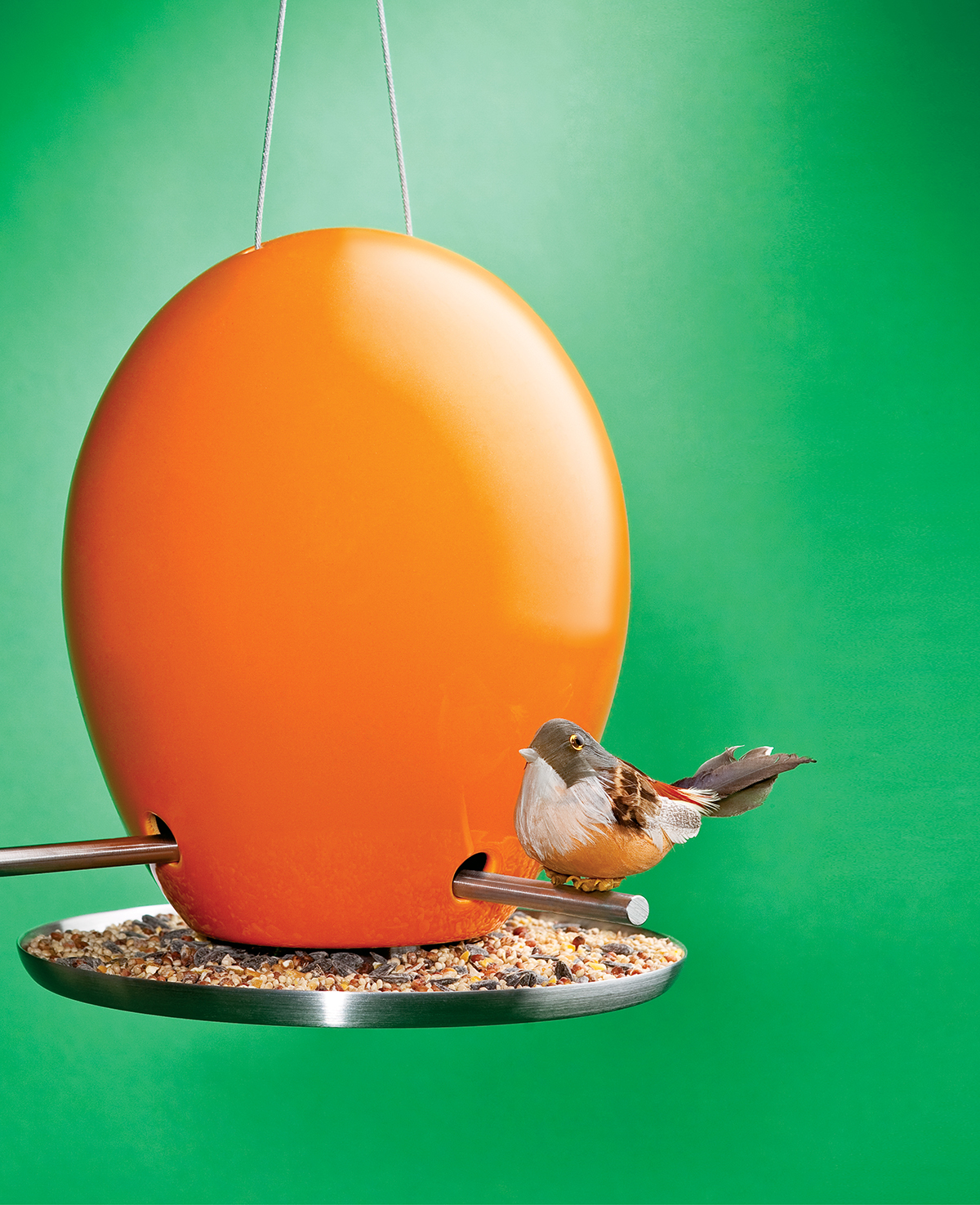Rule the Roost
IT USED TO BE that only birds twittered and tweeted. Though the online community has appropriated those activities, our feathered friends still own the market on chirping, warbling, and even chirruping — a chorus that more than 55 million Americans try to entice into their backyard each year.
In fact, providing room and board to roaming chickadees and titmice is the country’s second-favorite hobby, according to Dr. David Horn, director of the National Bird-Feeding Society. For some people, it’s a chance to connect with the wild world and add beauty to their garden; for others, it’s like having a TV permanently tuned to Animal Planet.
Though not exactly Days of Our Lives, this time of year — nesting season — offers serious theater: a no-holds-barred, me-and-my-kids-first sort of drama, in which a bird will not only drive off his neighbors, but also dive-bomb a human who strays too near a nest. “One of the things that happens when you put [a bird feeder] up is that you really start to see all these interactions,” says Tia Pinney, ecological manager at Mass Audubon’s Drumlin Farm. Everyone plays a part: Chickadees are bold, and woodpeckers are on the shy side. Some, like bluebirds, stick close to home — at times even nesting where they hatched—while others live life a little more cowboy. “The finches are like that,” Pinney says. “They don’t give a crud—they might show up in Ipswich; they might show up in Ohio!” And the poor misunderstood blue jay isn’t so much a bully as he is awkward. “He’s just big and loud,” she says. “He lands on something and everybody flies away — he’s the big kid.” The real bad guys, Pinney adds, are house sparrows—nasty, stubborn, and invasive, they crowd into a neighborhood like a pack of raucous frat boys and drive the other birds away. If you get house sparrows, consider (temporarily) retiring both feeders and houses.
For any beginning bird enthusiast, the first step is to install your birds’ digs correctly. For feeders, aim for a transition area, close enough to bushes or trees that a bird can dash to safety but not so close that housecats can hide and hunt. “There’s sort of a magic point,” Pinney says, maybe 12 or 15 feet from a dense shrub. Birdhouses are a little trickier because different species like different real estate — chickadees, for example, prefer a wooded area, but bluebirds like an open field. No matter what, though, don’t forget to hang the nests and feeders in sight of a window. After all, this is for your viewing pleasure, too. And there’s a design out there to match every backyard.
Photographs by Todd Dionne
Handmade birds provided by KhaliNouveau.com

